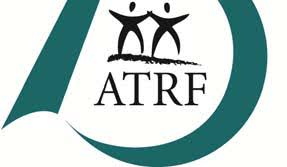Updated 18 January 2021
With the stroke of a pen on a 23 December 2020 ministerial order, Finance Minister and Treasury Board President Travis Toews imposed an investment management agreement (IMA) on the Alberta Teachers Retirement Fund (ATRF). In a news release on 12 January 2021, Alberta Teachers’ Association (ATA) President Jason Shilling responded to the existence of the Ministerial Order on the ATRF website.

Mr. Schilling of the ATA pointed out that the current outcome- an imposed IMA- was inconsistent with claims made by Finance Minister Toews when defending Bill 22, Reform of Agencies, Boards and Commissions and Government Enterprises Act. Bill 22 legislated the transfer of assets from ATRF management to the Alberta Investment Management Corporation (AIMCo) to occur by the end of 2021. Shilling was “incensed” by this draconian and arbitrary action and change in the government’s attitude towards ATRF’s board capacity to retain control over its investment policy. He expressed puzzlement that AIMCo would not agree to reasonable terms put forward by the ATRF board.

“You would think that AIMCo, which independent reviewers described as demonstrating unsatisfactory investment decisions, risk controls, collaboration and risk culture and as being desperately in need of a culture change would have approached its negotiations with ATRF with a little less arrogance and more flexibility. You would think the government would think twice before backing AIMCo’s position.”
The reference is to the summary of a report for AIMCo’s board examining the flawed volatility trading strategy (VOLTs). Given the situation, Schilling urged his members to lobby MLAs to reverse the government’s decision which severely limit ATRF board’s capacity to independently establish investment policy.
In the ATRF’s update on negotiations between AIMCo and ATRF of an IMA, it stated negotiations took place throughout 2020 to ensure a smooth transition to AIMCo management by 31 December 2021. As Jason Schilling expressed in a interview with Ryan Jespersen, the transition is not simply moving funds from a savings account to a chequing account.
Ten days after the Ministerial Order was signed, ATRF was informed of the Order which will remain in force until replaced should another agreement be reached by both parties. The release noted ATRF and AIMCo could not reach agreement on “certain key terms that we felt appropriately protected ATRF’s role and responsibility and the interests of our plans.”

ATRF made clear to its members that the government’s action “does not impact member’s pension benefits. Your pension remains secure and ATRF is still managing your pension plan.” The IMA (attached to the Ministerial Order) generally acknowledges the continuing role of the Board of the ATRF to establish the investment policy directing AIMCo on how the pension funds’ assets are to be managed. However, the imposed Agreement places many restrictions on how much flexibility ATRF will have, particularly when making changes in strategic direction. According to ATRF, AIMCo would be able to refuse to implement the Investment Policy “if, in the sole opinion of AIMCo, it would threaten to compromise AIMCo’s economies of scale or operational efficiencies. Such decisions by AIMCo are not subject to appeal or arbitration (emphasis added). Further specifics on the 31-page IMA are examined below.
Two days after the ATA’s announcement, leaders of Alberta’s labour movement, issued a press release condemning this latest move. Gil McGowan,

President of the Alberta Federation of Labour termed the latest moves as “unprecedented, outrageous and brazen.” The press conference, which had not garnered media attention from Post Media or The Globe and Mail at the time of writing, included the presidents of the Alberta Union of Provincial Employees, Health Sciences Association of Alberta, the United Nurses of Alberta, and the Canadian Union of Public Employees (Alberta). The conference confirmed that similar IMAs had been mandated through ministerial order for other plans including the Local Authorities Pension Plan, the Public Service Pension Plan and the Special Forces Pension Plan.
“In other words, AIMCo and the Finance Minister will be the deciders – and the hundreds of employers and hundreds of thousands of workers who actually pay into the plans will simply have to shut up, take what they’re given and trust that the government and AIMCo will do what’s best. This paternalistic approach is entirely at odds with industry norms and with the way pensions are managed in other provinces”

The key point reiterated by the union leaders was the money being managed was not government money but the savings of hundreds of thousands of Alberta public sector workers and retirees. More darkly and speculatively was the stated fear that the UCP’s “end game” is to use the “retirement savings of hundreds of thousands of Albertans to prop up oil and gas ventures in the province that are having an increasingly difficult time raising money from global investors and international markets.”
McGowan and his colleagues will be urging their members to pressure MLAs to reverse course. Alberta unions are also considering a legal challenge and also will campaign against the UCP’s plans for a fall 2021 referendum authorizing a transfer of Alberta’s portion of the Canada Pension Plan to an Alberta plan.
What is going on?
Firstly, it seems the UCP government is following its formula of acting in an adversarial manner with public sector workers. The fact that this Ministerial Order was not conveyed to the ATRF (and other pension boards) until January 4th follows a pattern undertaken when massive changes, like Bill 22, are announced. Affected parties simply are not consulted. Sure, there may have been indications that the power to enact an Order was coming, but it leaves teachers, other public sector workers and the public in general, with the impression that if the government and/or AIMCo does not get its way, it will resort to imposing solutions. This behaviour is in sharp contrast to the government’s approach with business interests who are consulted regularly and extensively, usually resulting in favourable policy outcomes, such as corporate tax cuts or tax holidays.

Secondly, as previously reported, the UCP government’s fascination with the investment manager AIMCo remains a bit of a puzzle. In the UCP’s election platform there was no reference to the use of AIMCo as a strategic tool. This change in attitude is especially curious for a supposedly free enterprise, small government, political party. Why give a Crown corporation, supposedly competing against private fund managers, more assets to manage?
Bill 22 was a shot out of the blue and a bold gambit benefitting AIMCo’s desire to “build scale.” AIMCo’s senior management understood the

new government’s desire to realize “savings and create efficiencies” through centralization. Whether Bill 22 was the result of lobbying for more assets by AIMCo or strictly a government initiative will probably never be known. However, the sudden importance of AIMCo in the ambitious UCP agenda to reverse NDP policies, seems odd. AIMCo’s board and management were likely worried that the NDP’s changes in 2017-18 could lead to a withering away of AIMCo as pension plans were allowed five years hence to shop their investment management needs elsewhere. Certainly, a reversal of NDP policy would have been looked upon favourably by the UCP government, whether this reversal was good public policy or not.
Thirdly, the ongoing gambit to repatriate management of an extra $30-40 billion of CPP funds to AIMCo to add scale supports the “economies of scale” argument used in the imposed IMA. However, it is not really certain that increasing assets managed by $30 or even $70 billion (with Alberta’s portion of CPP assets) will invite AIMCo into the bigger leagues where big “investment opportunities” are only given to the big boys.
Fourthly, the UCP’s unquestioning support of the oil industry and boosterism for large scale investment in that industry are congruent with its sudden interest a publicly owned investment manager to facilitate investment. AIMCo’s purchase of a share of Coastal Gas Link from TC Energy and its investments in Peridae, a small pipeline company indicates a willingness to commit significant sums into infrastructure, including pipelines.
Fifth, is AIMCo now simply an extension of government and vehicle to use public pension funds and the Heritage Fund to replace international capital fleeing from Alberta’s energy industry as the labour movement suggests? this would help explain the government’s strong, but silent, support for an AIMCo unfettered by retirement funds’ statements of investment policy. This is a plausible explanation and to a certain extent I buy it. A counter argument would be that government would not dare to do such a thing. If the UCP government wanted to find significant money to support the Alberta oilpatch, it could amend the Heritage Fund legislation and use that vehicle. This would however initiate an uncomfortable and unpredictable defence of AIMCo’s management and the continuing relevance of the Heritage Fund. What is clear is that under the new, ministerially imposed IMAs, ATRF and the other pension fund boards will not be able to fully satisfy their fiduciary obligations to their members.
Finally, the UCP government is not a fan of labour, in the sense they prefer to attract investment capital which in turn do create jobs. Creating jobs enhances of probability of re-election. Yet the capital they seek is focussed in the highly capital-intensive sector of fossil fuel development and spin-offs like petrochemicals. On the other side, Labour intensely distrusts the UCP and so labour strife is likely an outcome once the COVID-19 crisis passes.
Imposed Investment Management Agreement
Bill 22 amended the AIMCo Act to require investment management agreements be entered into between AIMCo and “designated entities” such as ATRF. The legislation gave the Minister the power by Order to specify the terms and conditions of the IMA in the event that a mutual agreement could not be reached. Ministerial Orders are not easily accessible to members of the public and their posting on Alberta’s Queen’s Printer website includes only five ministries’ orders. Notably absent are Finance and Treasury Board and Energy, arguably the most powerful ministries.
The central issue identified by ATRF is the question of who sets the statement of investment policy. Before the imposition of the IMA, it was the ATRF board’s sole prerogative to design the Statement of Investment Policy. (ATRF for detailed information on the Fund’s investments.)
Section 3 of the Agreement, dealing with the investment policy statement, begins: “Subject to the other provisions of this Section, AIMCo shall invest the Managed Assets in accordance with the Investment Policy.” The purpose section 3.2 sets out a generic boilerplate for ATRF- “managed assets of a Pension Fund” -which suggests this language is being applied to all pension funds currently managed by AIMCo (e.g. LAPP). However, the investment policy which purports to “inform and direct” AIMCo’s management “is subject in each case to AIMCo’s discretion described in Section 5.1.” The paragraph continues: “For greater certainty, ATRF shall maintain control over the Investment Policy but nothing in an Investment Policy shall impinge on AIMCo’s discretion over how to implement the Investment Policy. (emphasis added).” This does not sound like an agreement freely entered into by two parties acting independently.
Moreover, “provisions of the Investment Policy shall not conflict with the provisions of this document”- meaning the imposed IMA. Section 3.4 titled “Alignment with Pooled Funds,” requires ATRF give “due consideration” in its directing investment in accordance with investment categories that “align with the investment products and strategies made available by AIMCo through Pooled Funds.” ATRF must give “regard to” AIMCo’s economies of scale, the benefits of investing in established products and strategies to reduce “administrative burdens” and moreover “give due regard” to costs, complexities and risks in seeking AIMCo to invest in “alternative categories of investment products and strategies.” These considerations and due regards will hamstring ATRF board’s ability to decide on behalf of its members what a suitable investment strategy will be.
Further hampering ATRF Board’s freedom are limitations on amendments to the investment policy. Section 3.6 requires the ATRF to “provide reasonable prior notice” of proposed amendments to allow AIMCo to include comments on “transitional issues and liquidity constraints,” perfectly reasonable grounds for AIMCo to be involved. However, in executing the amended policy AIMCo will do so “as reasonably practical” with regard to “liquidity of investments, minimizing losses or maximizing any gains, or the impact upon the other funds managed by AIMCo.” While each of these considerations seem reasonable, in aggregate they could mean significant losses if the implementation is delayed in rapidly moving financial markets.
Equally worrisome is section 3.8 which allows AIMCo to reject an amendment. AIMCo can reject any amendment for the following reasons: 1) “does not respect the underlying principles reflected in the Agreement; 2) does not respect the nature of AIMCo’s discretion; and 3) has a material adverse impact on AIMCo’s ability to discharge its mandate under the AIMCo Act or threatens to compromise AIMCo’s economies of scale or operational efficiencies.” In short, this section, which is not subject to the arbitration provisions of section 15, uses subjective criteria to eviscerate the ATRF’s board’s capacity to set the investment policy it believes is appropriate for its members.
Section 5 states that, subject to compliance with the Investment Policy, “AIMCo shall have full discretion to make investment decisions” in respect of ATRF’s assets. In this section AIMCo would set the benchmarks to be used and the “value-add” target of the pooled fund used in creating investment products. In short, this document and presumably the other non-public IMAs, is not customer centric at all. As mentioned in Gil McGowan’s notes at the Labour union press conference:- “It’s like a customer going to an auto dealership and saying “I want to buy a red car,” and the dealership saying “here’s your blue truck.”
Another wrinkle contained in “section 6- Non-exclusive Relationship” is that AIMCo, in allocating “investment opportunities,” shall be able to use its discretion and that, “AIMCo may take action with respect to any of its clients which may differ from or be contrary to advice given to ATRF or differ in the timing or nature of action taken with respect to the managed assets and engage in client-to-client transaction and the crossing of transactions between clients.” In short, AIMCo is the sole arbiter of deciding which funds and amounts are to be allocated for “investment opportunities.”
AIMCo’s response
On the day of the labour press conference, AIMCo continued its ham-fisted client relations campaign. The most recent missive from AIMCo’s Chair (link on AIMCo’s website no longer available), Mark Wiseman, confirmed from AIMCo’s side that ministerial orders have been issued for other pension funds. According to Wiseman, the ministerial orders:
“establishes the roles and responsibilities of the investment manager (in this case AIMCo) and its clients is critical to both good governance and operational independence. These factors define the success of the Canadian model of pension management. AIMCo’s approach to IMAs is to ensure it is maximizing the advantages of this model to the benefit of all our clients.” “The terms and conditions included in the Ministerial Orders are in the best interest of both AIMCo and its clients and clearly align interests. They remain consistent with current practice and provide the certainty to move forward with the important business ahead of us, as we continue to build a world-class public asset manager for the province of Alberta.”
 Mark Wiseman, Chair, AIMCo Source: CBC.ca
Mark Wiseman, Chair, AIMCo Source: CBC.ca
Wiseman, recently appointed as AIMCo’s Chair, speaks authoritatively on behalf of the Board and Management. As someone widely acknowledged as an expert on public pension management, but less so on governance matters, his words carry weight inside Canadian boardrooms. It is less clear that Mr. Wiseman’s foregoing advice to the hundreds of thousands of public sector workers and retirees will be taken for much more than paternalistic guidance. This action supporting the imposition of the IMAs, begs the question of how independent from government AIMCo is.
Declaration of War-Opinion
The action by the Kenney government is a continuation of its frontal attack on public sector workers. The animus between the government and organized labour is palpable. But all governments are naive to think they are NOT playing with fire when they tinker with pensions. It is one thing to eliminate jobs and attempt to reduce wages, it is quite another to interfere in the management of Alberta teachers’ pensions. Memories of pension funds being run into the ground are long- Nortel, Enron and Conrad Black’s Dominion Stores.
Further instances of this behaviour and arrogance from the UCP government confirm the government’s ongoing antagonism to labour. This action will make it more difficult for the UCP to recoup the lost ground in recent polls showing rising support for the NDP and far right parties. Had AIMCo’s performance been satisfactory throughlast March’s market volatility, AIMCo might be given the benefit of the doubt. Rather, this attempt by AIMCo, with the support of the government, to impose agreements will stick in the craw of the 400,000 Albertans who are member of these plans. These 400,000 will vote in two years on the UCP’s track record. It makes one wonder whether emphasizing the benefits of economies of scale, centralization and efficiencies will be a winning electoral formula in 2023.
Related Posts